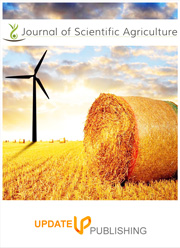Postharvest losses to agricultural product traders in Mutare, Zimbabwe
DOI:
https://doi.org/10.25081/jsa.2018.v2.892Keywords:
Post harvest losses, vegetables, fruits, storage, profitability, qualityAbstract
The study examined the nature and causes of postharvest losses incurred by formal and informal traders in Mutare urban. A survey was conducted where questionnaires were administered to various respondents in the formal and informal sector of fruits and vegetables. The research study assessed the profitability of trading in fruits and vegetables to formal and informal traders. It also assessed traders’ perception of the losses of fruits and vegetables and further determined the possible ways of reducing these postharvest losses so as to enhance profitability in the sector. The study from a sample of 34 respondents revealed that both formal and informal traders experience losses during storage and transportation of goods. Losses incurred during storage were due to the unavailability of proper storage facilities specifically to informal traders. Furthermore, postharvest losses were also resulting from excessive exposure of crops to sunlight, poor packaging, poor carrying containers, attacks by insect pests as well as microbial or disease attacks. Postharvest losses affect profitability and growth of the fruits and vegetables sectors. There is need for farmers to improve on the quality of their produce and harvesting practices as emphasized by traders as they suffered losses as a result of poor quality goods supplied. Further postharvest practices should be improved by traders with special emphasis on adequate storage, handling and proper transportation of goods.
Downloads
References
2. Alexandratos N, Bruinsma J. World agriculture towards 2030/2050: The saving water. From Field to Fork-Curbing Losses and Wastage in the Food Chain 2012 revision. Working paper: FAO: ESA No. 12-03, 2012, p.4.
3. De Lucia M, Assennato D. Agricultural Engineering in Development: Post-harvest Operations and Management of Foodgrains. (1994). FAO Agricultural Services Bulletin No. 93. Rome: FAO.
4. Hodges RJ, Buzby JC, Bennett B. Postharvest losses and waste in developed and less developed countries: opportunities to improve resource use. Journal of Agricultural Science 2011;149: 37-45
5. United Nations ESCAP. Post-harvest Management for Sustainable Agriculture. CAPSA-ESCAP, 2015. Indonesia.
6. Kitinoja L, Kader AA. Measuring postharvest losses of fresh fruits and vegetables in developing countries. Postharvest Education Foundation. 2015.
7. FAO. Food wastage footprint: Impacts on natural resources. 2013.
8. Dube L, Mutetwa M. Assessment of aflatoxin awareness by players in groundnut value chain: The case of Dora in Mutare, Zimbabwe. IJIRD Journal, Vol. 4(10), 2015, 90-100.
9. Kirby DA, Watson A. Small Firms and Economic Development in Developed and transition Economies: A Reader. 2006: Ashgate Publishing Limited.
10. Rolle RS. Postharvest Management of Fruit and Vegetables in the Asia-Pacific Region. Asian Productivity Organisation. 2006. Tokyo.
11. Lapar MA, Pandey S. Adoption of soil conservation: the case study of Phillipine uplandsAgric Econ 1999;21: 241.256.
12. Baidu-Forson J. Factors affecting adoption of land enhancing technology in Sahel: Lessons from a case study in Niger. Agricultural Economics 1999;20(3): 231.239
13. Neill SP, Lee DR. Explaining the adoption and Disadoption of Sustainable Agriculture, The case of cover crops in Northern Honduras Economic Development and Cultural Change,2001;49 (4), 793-820
14. Qaim M, Javnry A. Genetically modified crops corporate pricing and farmers’ adoption, the case of BT Cotton in Argentina. American Journal of Agricultural Economics, 2003;85(4), 814-828
15. El-osta HS, Morehart MJ. Technology Adoption in Dairy Production and the Role of Herd Expansion, Agricultural and Resource Economics 1999;28(2), 84-



 .
.